There are so many different kinds of cream! What cream do I use in my desserts?
Shelves in a super markets are stocked with a huge variety of creams. There’s Heavy Cream, Thickened Cream, Double Cream, Single Cream, Pure Cream, Light Cream, Cooking Cream, Whipping Cream and many more. As there’s no standardisation, cream is labeled differently based on the country of its manufacture.
Here’s a quick guideline.
Look at the label!
Look at the Milk Fat content indicated on the bottle/carton. This will tell you what type of cream it is, and what you can use it for. Especially if you plan on whipping the cream.
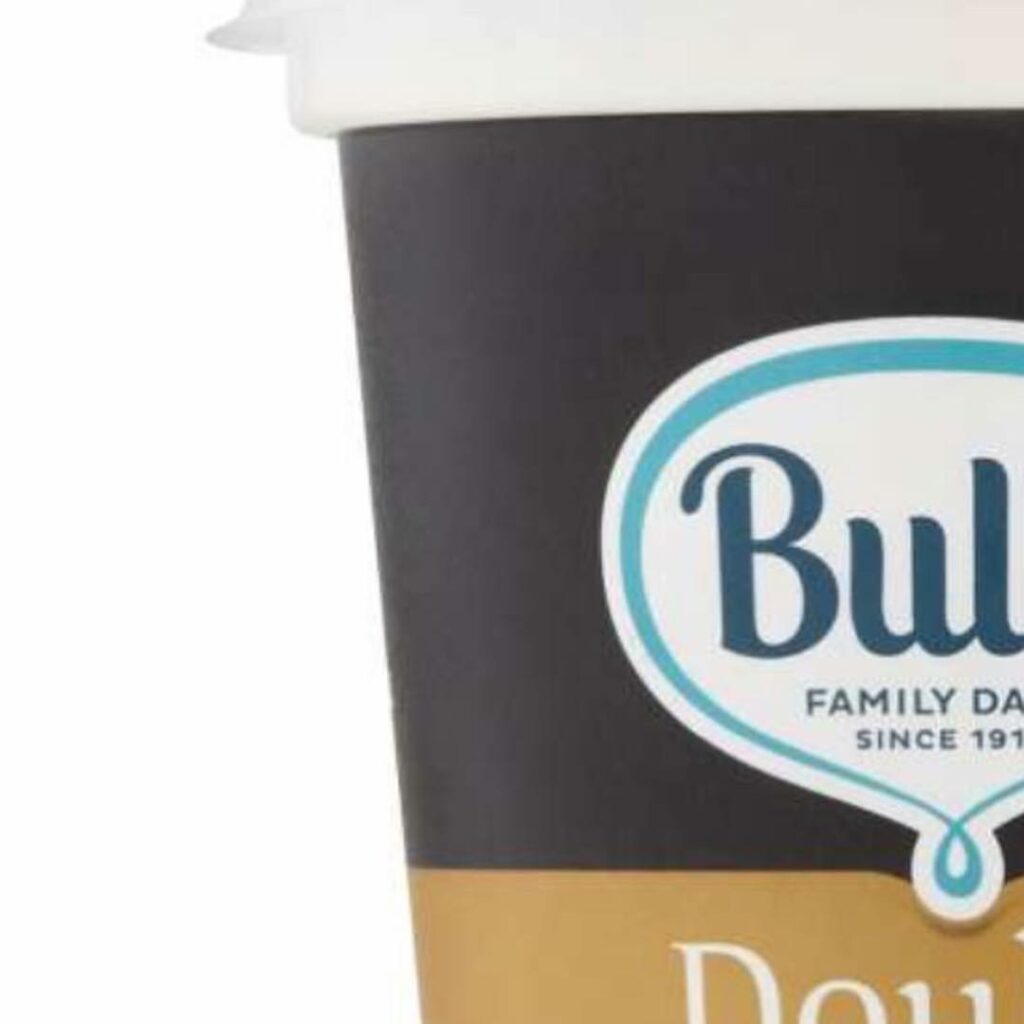
Generally, the higher the Milk Fat content, the better the cream will hold its shape. But conversely, the more easily it can be over-whipped. And when cream is over-whipped, you get butter and buttermilk!
Double Cream has between 45 to 48% fat. This is great served spooned as is, over hot desserts. This cream will whip up rapidly and go grainy if over whipped. Use a balloon whisk for control, ideally.
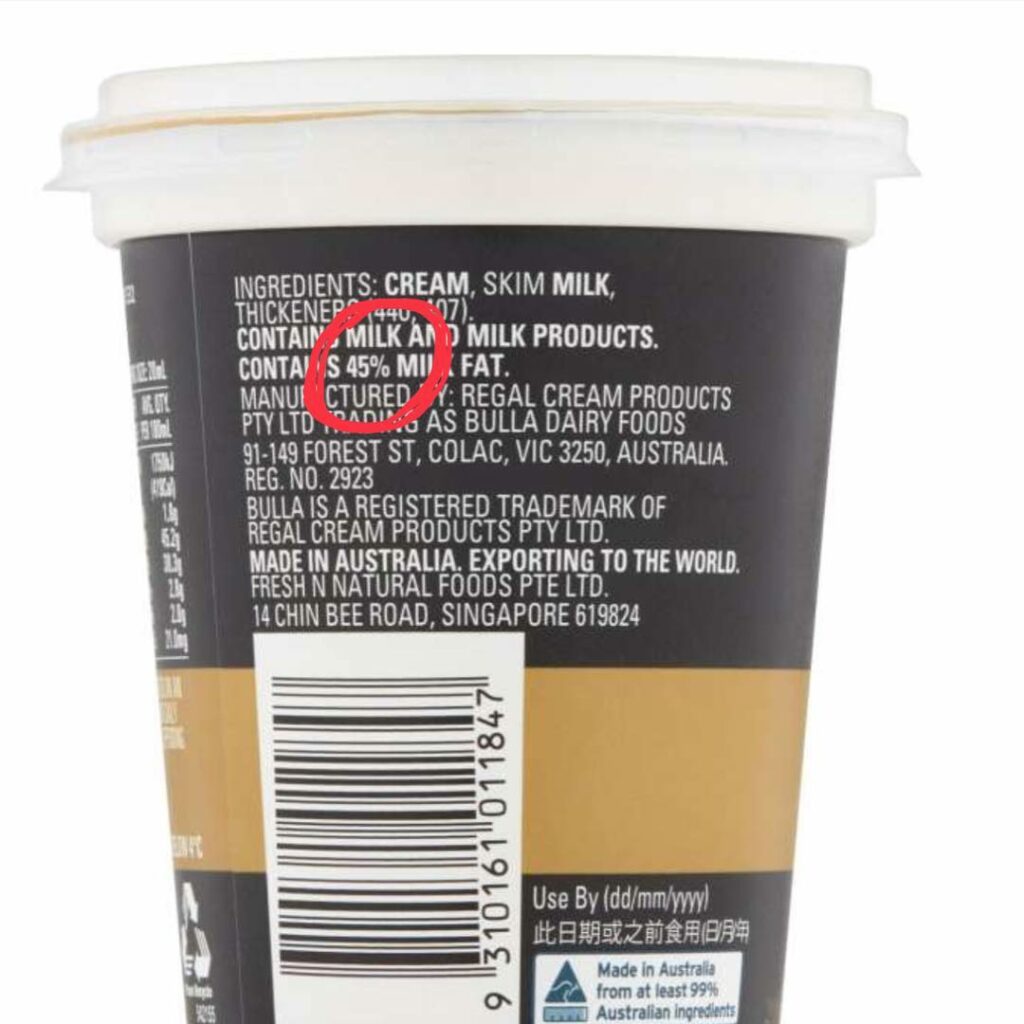
Whipping cream has between 34 and 38% fat. This cream will hold its shape when whipped to soft peaks. In a hot place like Singapore it needs to be stabilised.
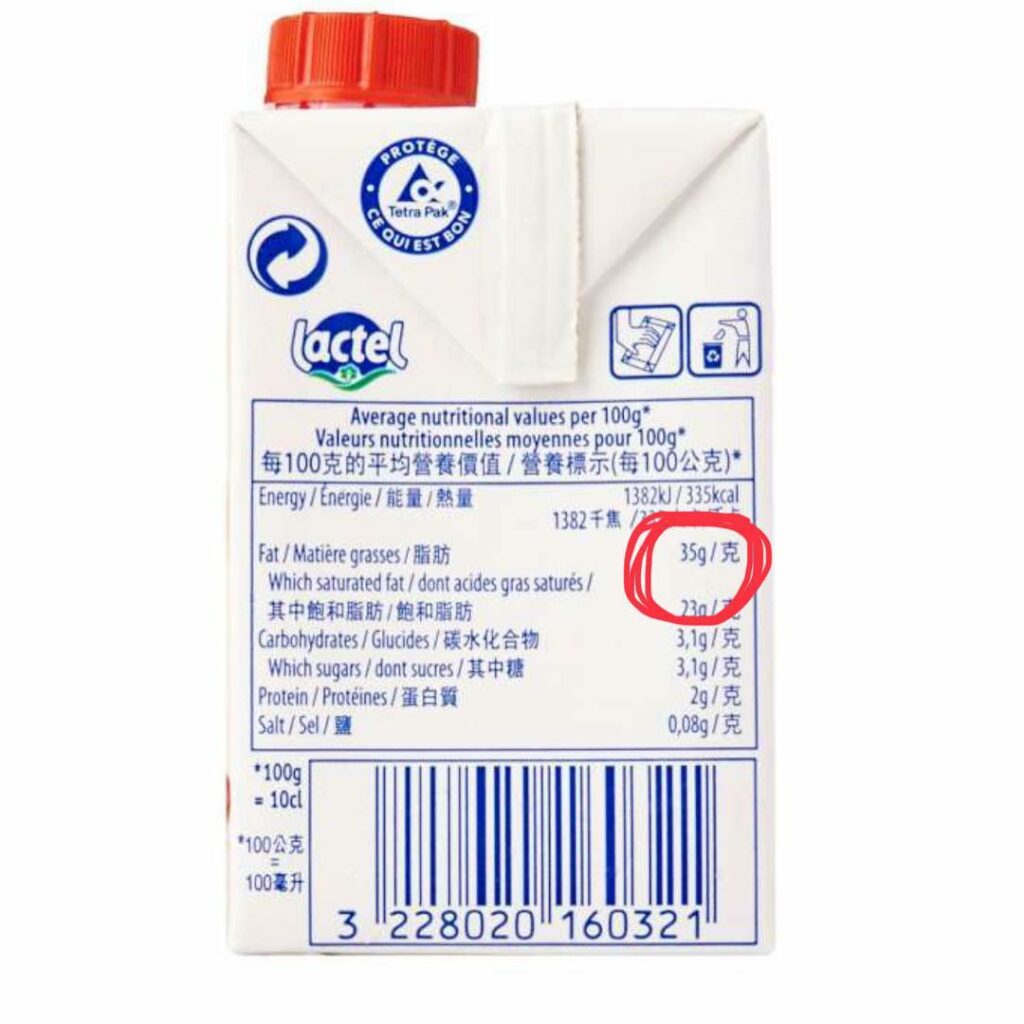
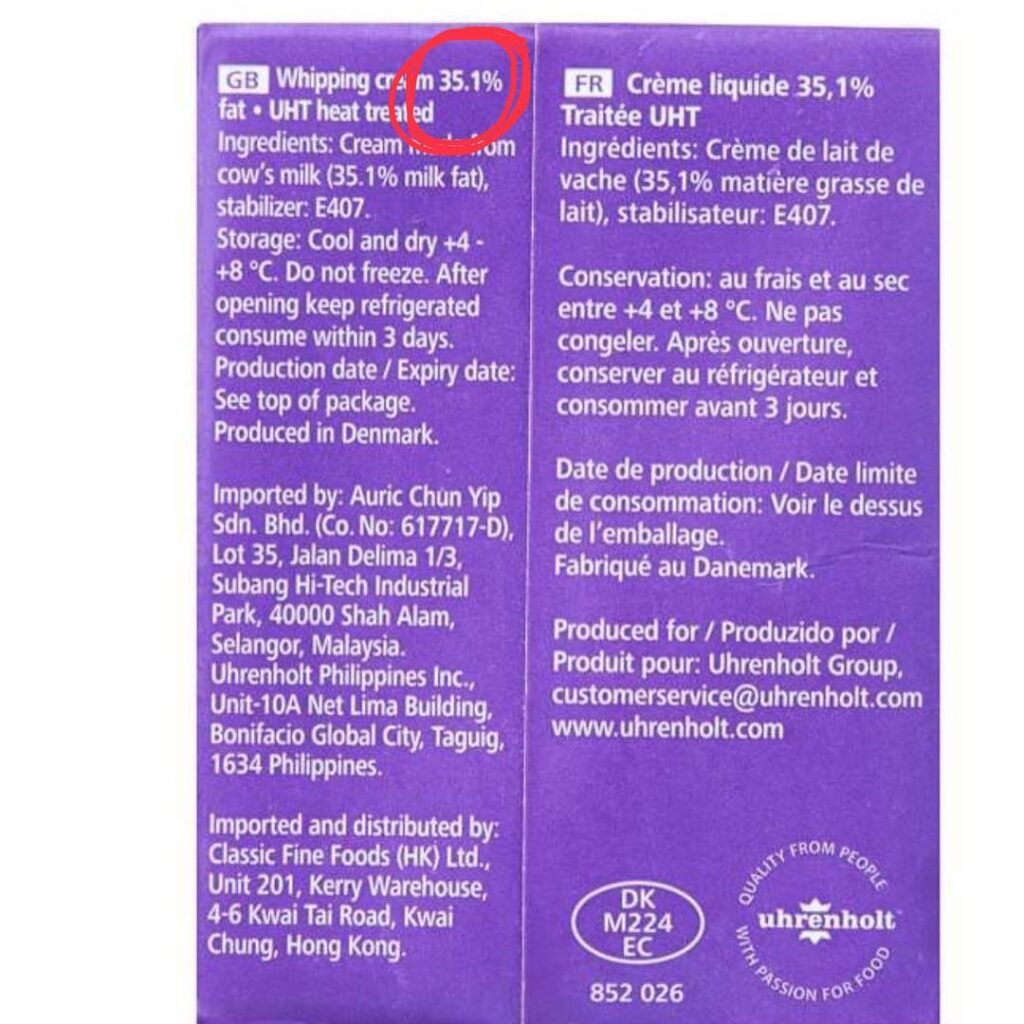
While European companies generally label this as Whipping cream, a similar product is called Thickened Cream in Australian brands and Heavy Cream in American brands.
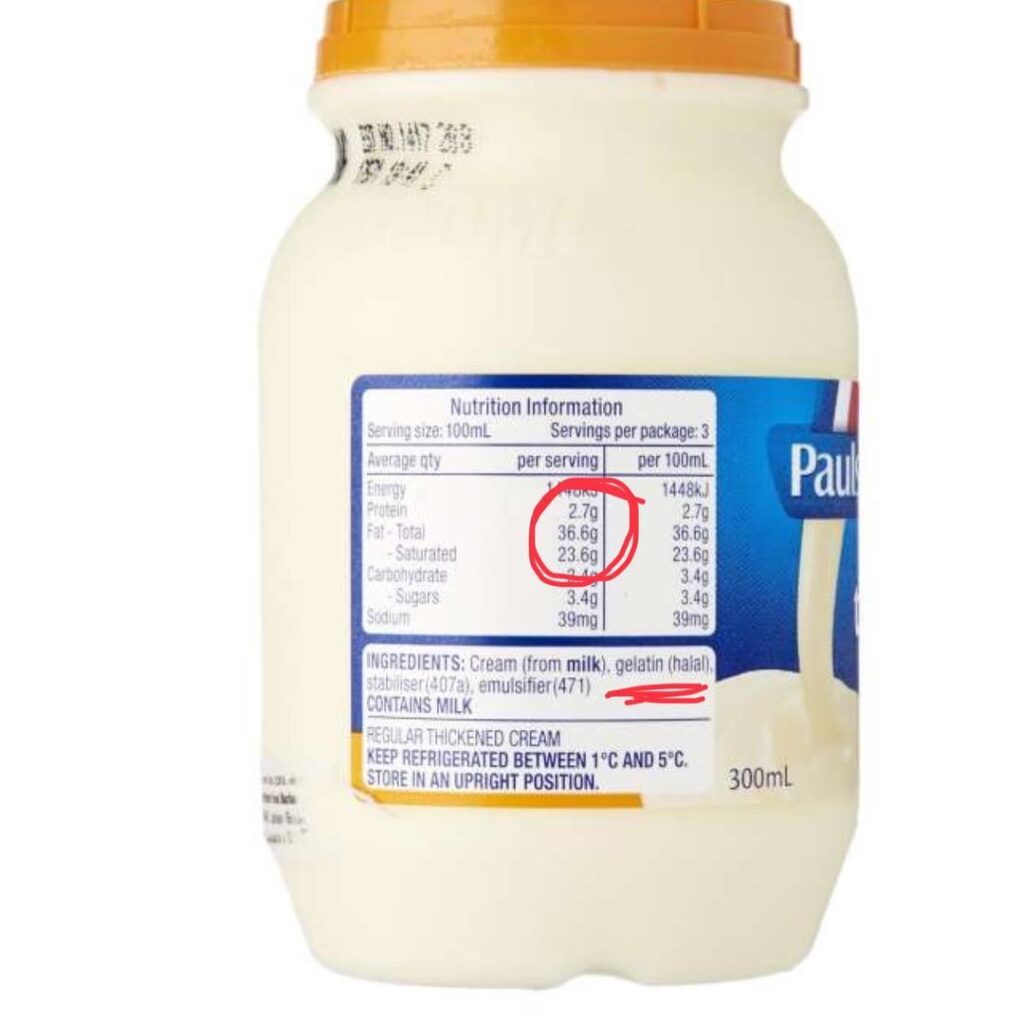
Cooking Cream has between 18 and 25% fat. It’s difficult to whip up, and is best used for pastas, soups and panna cottas. This cream is also called Light Cream or Single Cream.
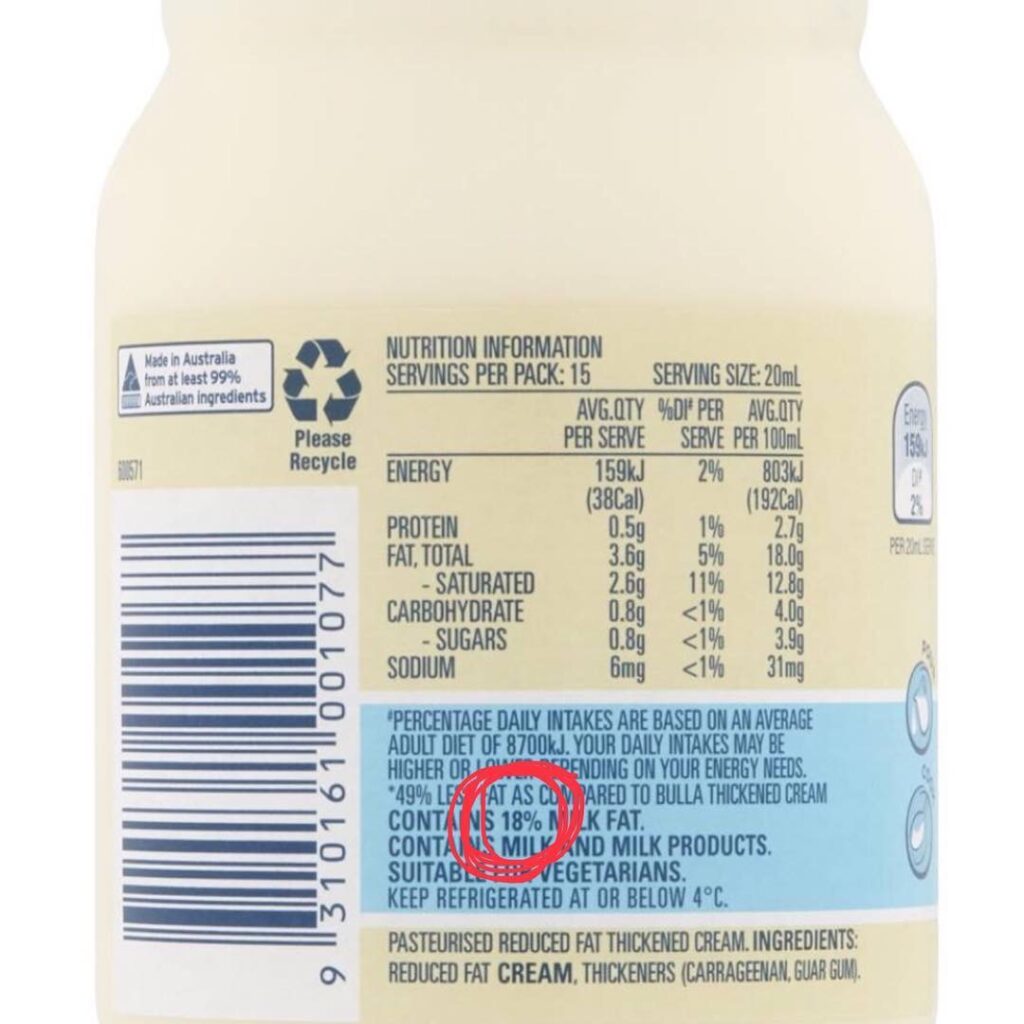
Lastly, when a recipe calls for Half and Half, use half whipping cream and half full fat milk to make your own.
A point to note is that most commercially produced cream have stabilisers in them. If you are vegetarian look for the ones with carageen and not gelatine.
So what is the cream in your fridge? Do share pictures!
